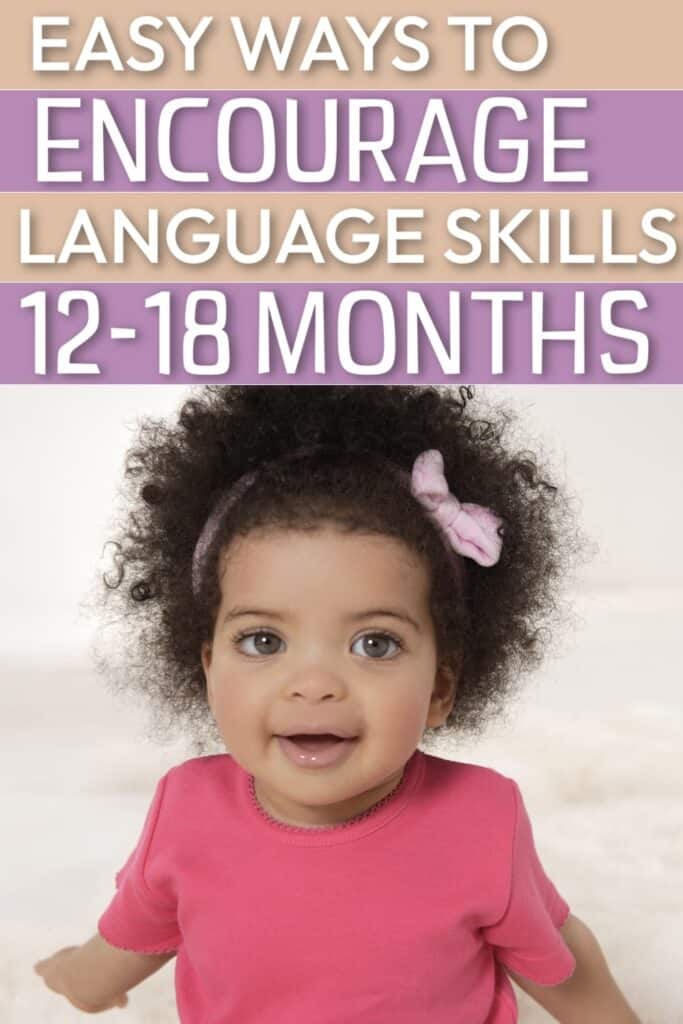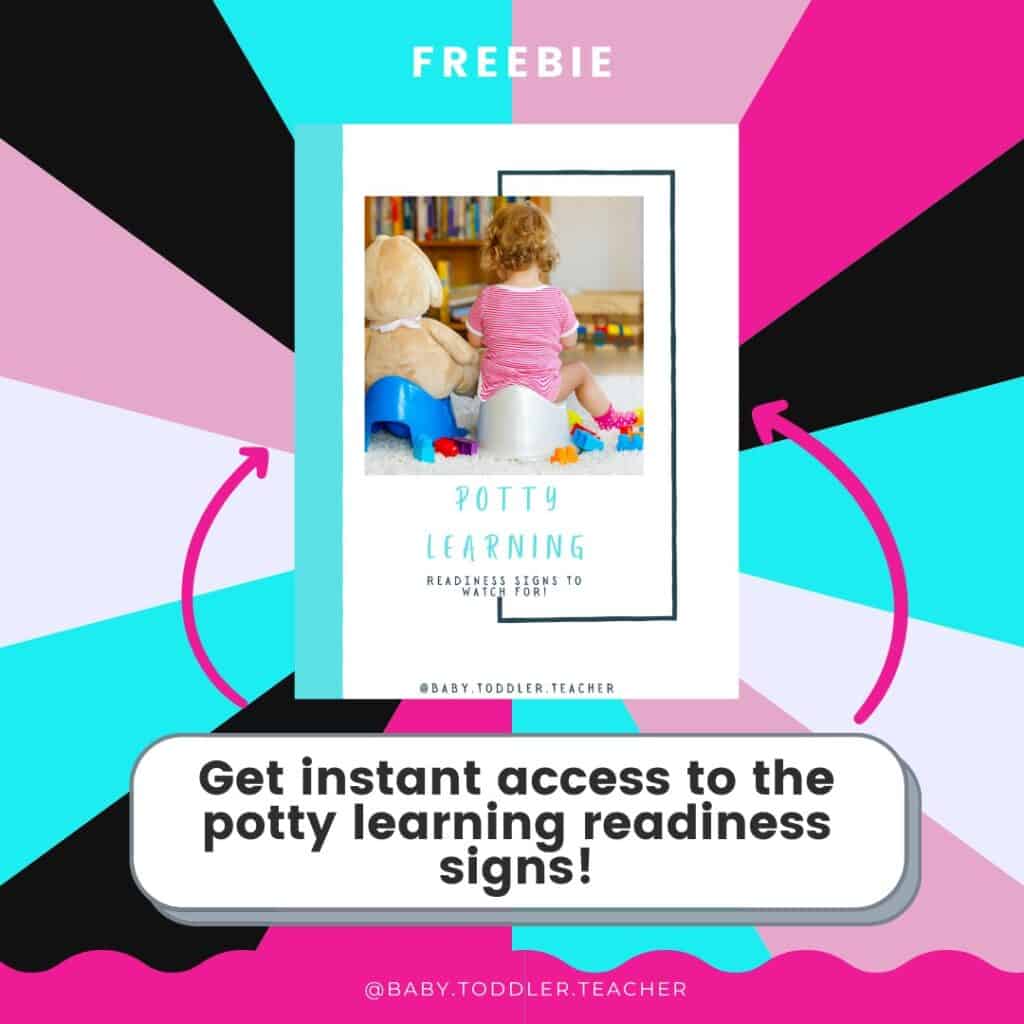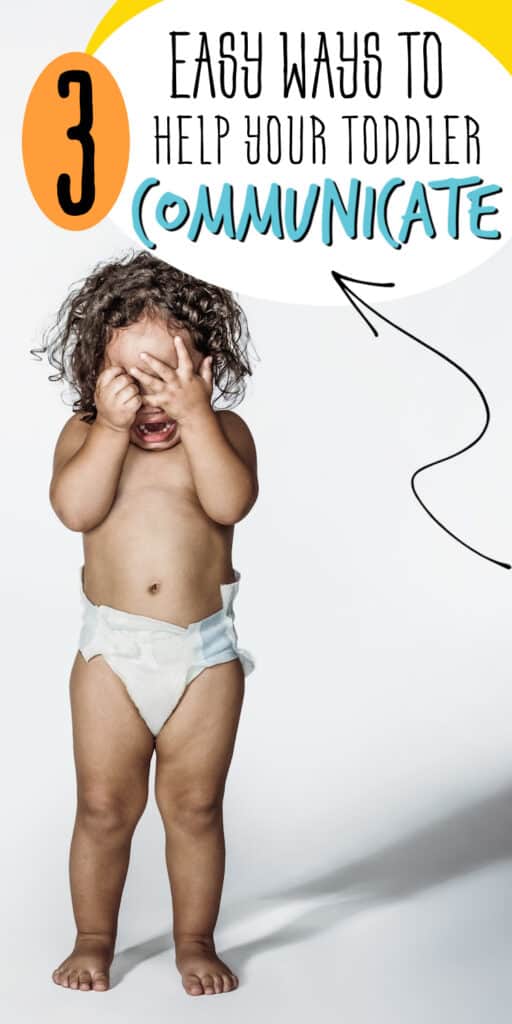Helping your toddler develop their language skills doesn’t have to involve elaborate activities or expensive toys.
Instead, you can support their growing vocabulary and communication abilities by incorporating a few simple, practical strategies into your everyday routine.
From changing diapers to bedtime stories, here are three actionable ways to encourage language development in toddlers aged 12-18 months.
The best part?
These ideas require zero extra planning or setup!

Why Focus on Language Development Between 12-18 Months?
Between 12 and 18 months, toddlers are on the brink of significant language milestones.
At this age, they are rapidly soaking in new words, mimicking sounds, and beginning to form their first sentences.
Your involvement as a parent plays a crucial role.
The key is to make it fun, engaging, and part of your normal day-to-day interactions.
Here’s how.
1. Sing During Diaper Changes 🎶
Diaper changes might not be glamorous, but they’re a fantastic opportunity to engage your child’s interest and introduce new words. Singing a song or fingerplay during this mundane task can work wonders for language development.
Why It Works
- Motivates Toddlers: Toddlers are naturally drawn to music. The rhythm and melody of songs capture their attention, making it an effective way to connect with them.
- Repetitive Vocabulary: Familiar songs expose children to repeated words and phrases, which is essential for vocabulary building.
How to Do It
- Choose simple, repetitive songs such as “Twinkle, Twinkle, Little Star” or “Head, Shoulders, Knees, and Toes.”
- Pair the song with fingerplays or gestures to reinforce meaning—for example, pointing to body parts as you name them.
- Change up the lyrics occasionally to include your child’s name (e.g., “[Child’s Name]’s got a clean diaper today!”).
Bonus tip: Keep the interaction lively and playful. Toddlers will often try to mimic the words and gestures, which is an important step in mastering language.
2. Label Colors While Getting Dressed 🌈
Getting your toddler dressed is something you do every day, so why not turn it into a teachable moment? By labeling the colors of your child’s clothes as you dress them, you can introduce new vocabulary effortlessly.
Why It Works
- Easy Color Recognition: Color words, like “red,” “blue,” or “yellow,” are some of the first descriptive words toddlers learn. Labeling clothes introduces these concepts in a natural context.
- Real-Life Application: Associating colors with actual objects (e.g., “green socks” or “yellow shirt”) helps toddlers make meaningful connections.
How to Do It
- Clearly label each piece of clothing as you dress your child (e.g., “Here are your orange pants” or “Wow, these socks are purple!”).
- Use consistent language to describe the colors so your toddler hears the words repeatedly.
- Take it a step further by holding up two options and asking, “Which one is the blue shirt?” Encourage them to point to the correct one, even if they’re not speaking yet.
By forming these daily associations, your child will gradually recognize and remember their colors. Easy, right?
3. Label Pictures in Books 📚
Reading books together is a staple activity for many parents, but you can make it even more interactive by labeling the pictures instead of simply reading the text. This technique strengthens your toddler’s receptive language skills, which are crucial for understanding and following directions.
Why It Works
- Boosts Receptive Language: Pointing to and identifying pictures helps toddlers comprehend words before they start saying them.
- Engages Participation: Actively involving your child by asking them to point to pictures keeps the interaction engaging and fun.
How to Do It
- Open a picture book (simple ones with large, clear images are best, like Brown Bear, Brown Bear, What Do You See?).
- Instead of reading the story, try this:
- Point to pictures and name them (e.g., “This is a dog,” “Look, a ball!”*).
- Encourage your child to point back—ask, “Where’s the cat?” or “Can you find the tree?”
- Praise their efforts, whether they nail it or just giggle while trying—it’s all part of learning!
- Vary your tone and enthusiasm to keep their interest piqued.
Over time, this interaction reinforces their ability to understand and process language—a key foundation for following directions and forming sentences.
Small Moments, Big Impact 💡
These simple, everyday strategies are proof that supporting your toddler’s language development doesn’t have to be complicated. By making small tweaks to activities you’re already doing—singing during diaper changes, labeling colors during dressing, and pointing to pictures during storytime—you’re laying the groundwork for lifelong communication skills.
Remember, toddlers learn best through repetition, interaction, and lots of love. The more you engage with them in meaningful ways, the more confident they’ll become in expressing themselves.
Feeling inspired and want some more easy ideas? Click Here!



Kayla O’Neill has a master’s degree in education as well as a bachelor’s degree in special education with an emphasis in early childhood education. She has been working as a developmental therapist with babies and toddlers in early intervention since 2012. She is also a mom with two young children.